01
Dec
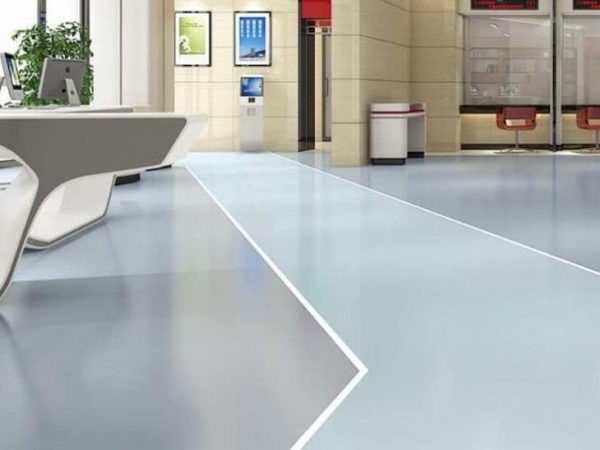
According to experts, one of the best choices of materials for these facilities is flooring that can withstand heavy foot traffic and is slip-resistant to avoid any injuries to patients or staff. For this reason, we’ve selected the three most commonly used materials that make good hospital flooring options, including vinyl, linoleum, and rubber.
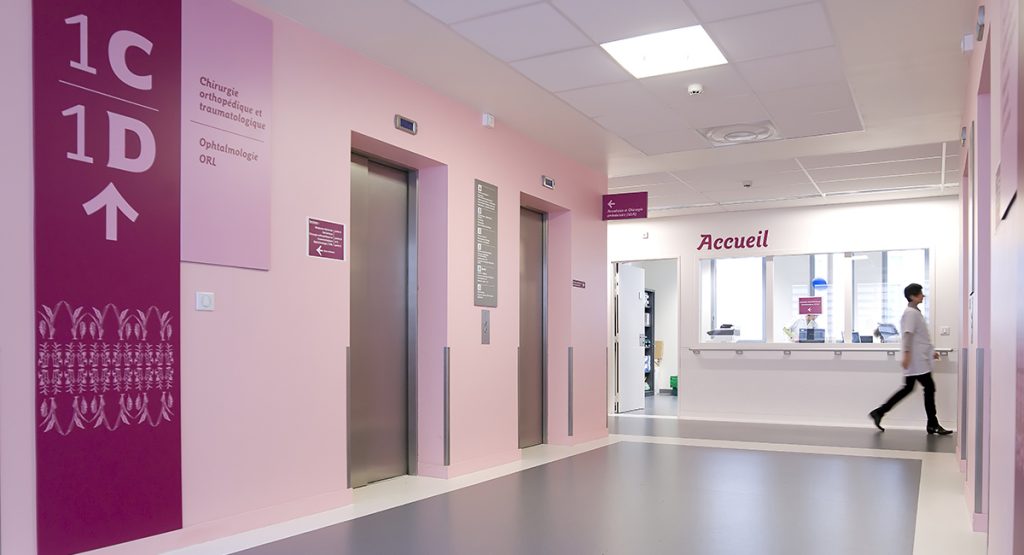
When it comes to choosing the best material for flooring in hospitals, vinyl boasts great looks and durability. This type of material is long-lasting and, with proper care and maintenance, can retain its good look for many years. This is one of the reasons why vinyl is one of the primary options for flooring installation in hospitals and other places where these quality requirements are needed.
Another major reason why vinyl makes one the best hospital flooring materials is its highly slip-resistant surface which makes it perfect for areas where the safety of patients and staff is of huge importance.
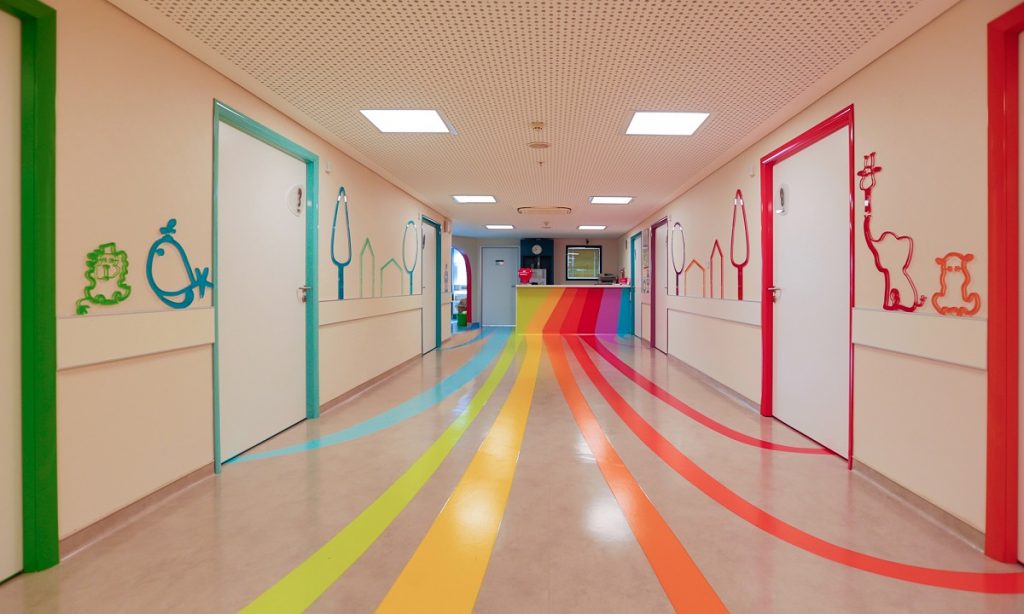
Thanks to its seamless surface, vinyl reduces the accumulation of dirt, water, and other substances, which makes it the ideal material for hospitals where a high level of sanitization is required. The first step requires removing all the dirt which can be accomplished by simply sweeping or vacuuming the flooring surface, which is then followed by damp mopping the floors. With these simple practices of daily maintenance, hospital flooring can maintain its good appearance for a long time.
Vinyl is one of the simplest materials to install, which also makes it a good DIY option for home installation.
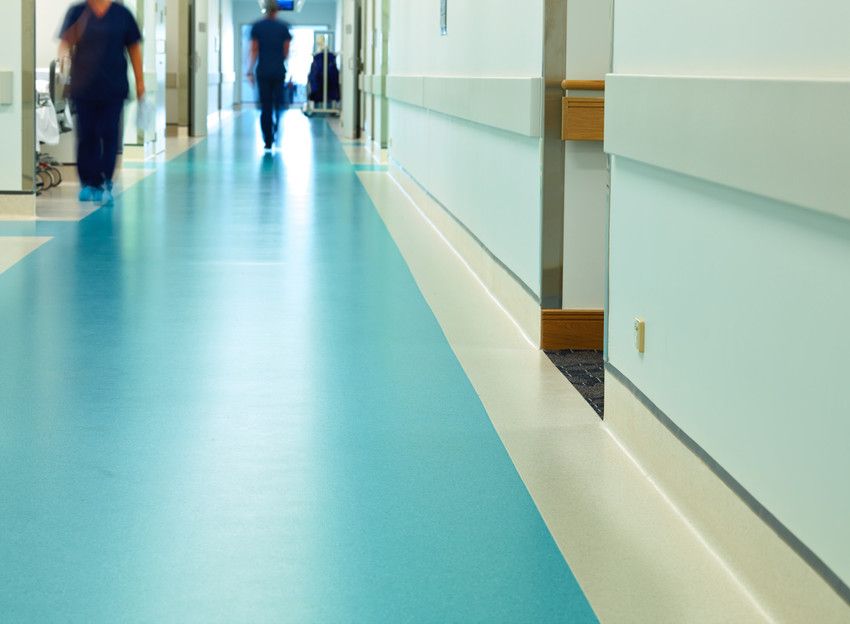
Corrirods, entrance rooms, nursery rooms, emergency rooms, and patient rooms can all benefit from this flooring type. For instance, vinyl is widely used for corridor floorings installation as they are simply considered the arteries of the hospital being one of the heaviest traffic places, including food traffic, the usage of stretchers, med carts, and wheelchairs on a daily basis. Therefore these are the areas that require rapid installation and high durability above all.
The fact that vinyl looks convincingly similar to wood makes it a highly sought-after material. Even though this makes it much cheaper in comparison to wood, vinyl has a significantly shorter life span and qualities.
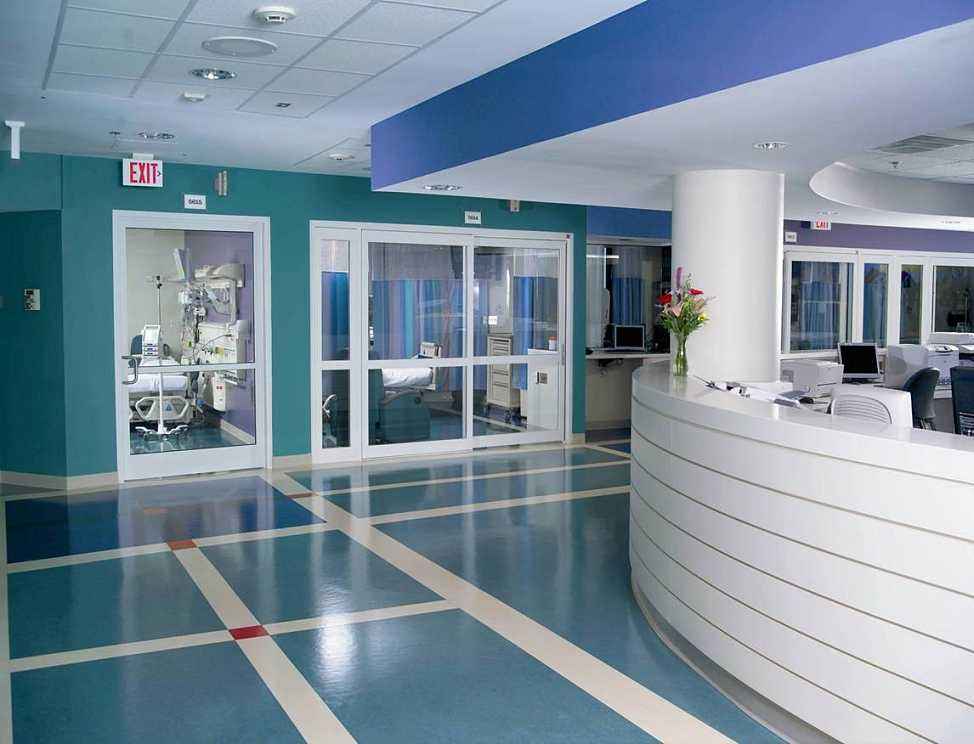
Besides all these positive aspects, vinyl also has its downsides. During the manufacturing process, this material is known to release toxins that have a huge environmental impact. Moreover, once being installed, this material is hard to be removed or substituted with another material, especially if adhesives and other types of glues are used during the installation process.
Medical centres need a reliable flooring type that provides, stability, durability, and soundproofing. The eco-friendly rubber is considered another great material choice for installing flooring in hospitals and other commercial places which are constantly exposed to heavy traffic.
The high-quality rubber is an especially resilient material that provides enough cushioning and comfort underfoot. This is an important feature for patients who have trouble walking and for the busy staff members who are rushing around accumulating stress on their feet and ankles. This same resilience makes it easier for staff to move carts, wheelchairs, and other pieces of equipment across different areas in the hospitals with ease.
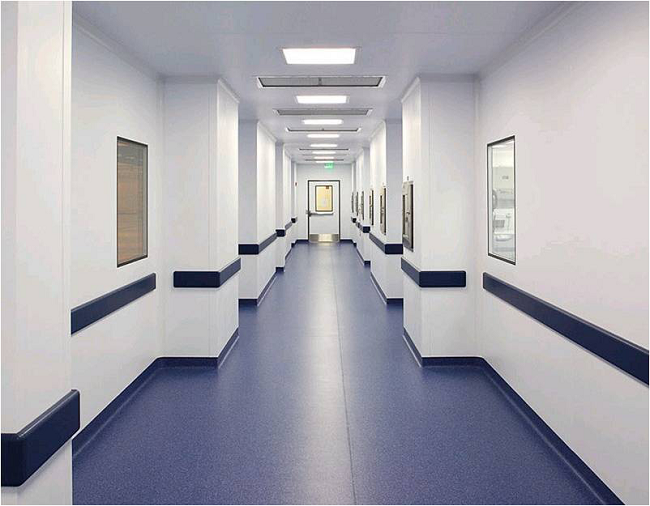
The slip-resistant surface is especially critical in orthopedic and rehabilitative areas of the health care centres and this material is specially made to minimize the risk of falling, which is essential for the safety of patients and the staff.
Besides all these features, the material needs to be able to communicate cleanliness and professionalism, so the patients and staff members can feel welcomed and reassured all the time. This material is highly versatile due to its aesthetically pleasing features. It is available in a variety of textures and colours to fit the design of the interior where it will be installed. Besides being used for medical care facilities, rubber flooring is perfect for areas exposed to moisture such as kitchens and bars, or some recreational facilities such as gyms and yoga studios.

Rubber flooring has a dense non-porous surface which makes it easy to maintain. Most spills can be removed easily without causing any residual staining. It only requires regular vacuuming and mopping to maintain its good appearance. There is no need for using any type of harsh cleaning chemicals that can be toxic to the environment to provide deep cleaning.
Rubber is perfect for installing in patients’ rooms, corridors, and other areas to limit the sound transfer and prevent noise and conversation to travel from one place to another. This feature is essential for ensuring the hospital’s integrity and reliability, as well as the patients’ privacy and peace.
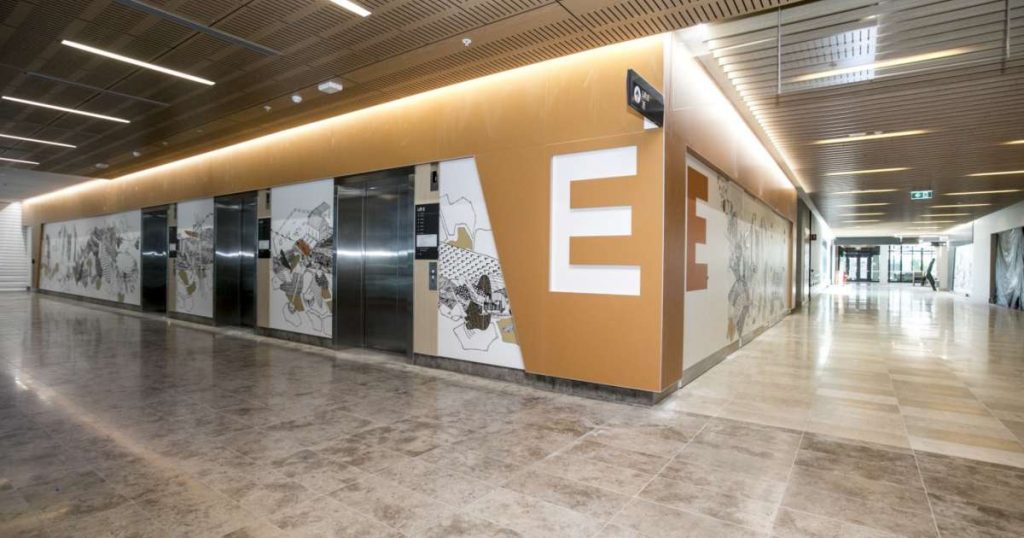
Residential rubber flooring materials cost between $1 and $15 per square foot. Poured rubber surfaces on the other hand are more expensive and cost between $7to $15 per square foot.
One of the biggest disadvantages of this material is that installation in bigger places, such as hospitals and other commercial areas can be time-consuming. Moreover, rubber tends to give off a bad smell after the first months of the installation process.
There is a reason linoleum is often the flooring you will see in hospitals and other commercial areas. This material is highly durable and with proper care and maintaining can last up to 40 years.
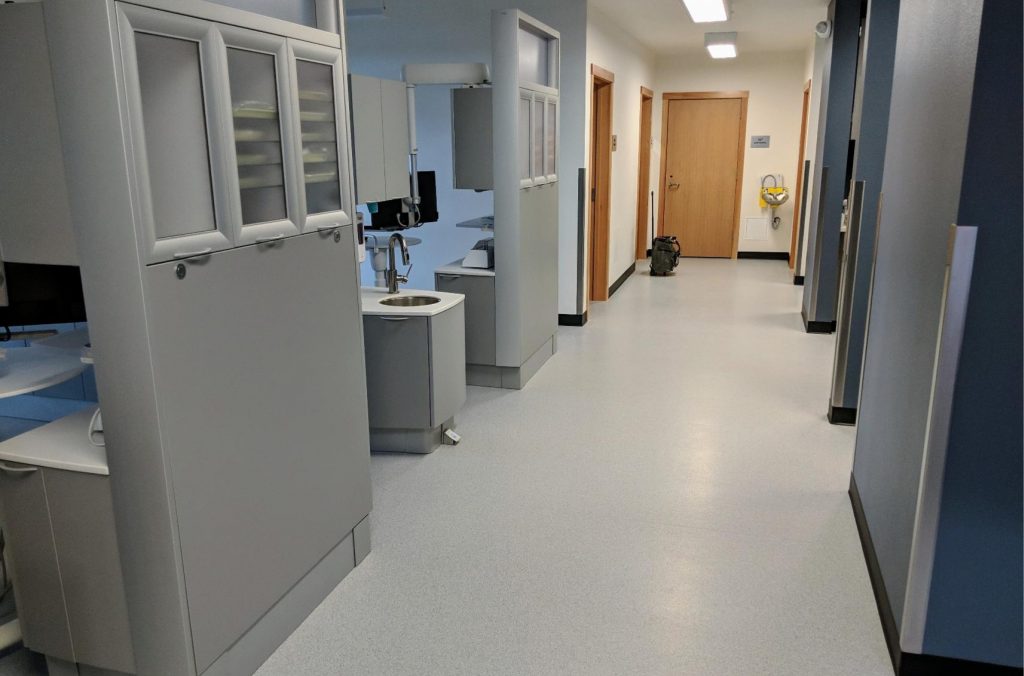
This flooring type is extremely easy to maintain as like with all other hard surface flooring types it just requires regular sweeping and damp mopping. However deep cleaning is recommended once per month.
This material is one of the most environmentally friendly materials. It’s made from natural renewable sources including linseed oils, cork powder, pine resin, and wood flour. Moreover, It comes in a range of colours and patterns ranging from subtle neutral tones to more vivid ones.
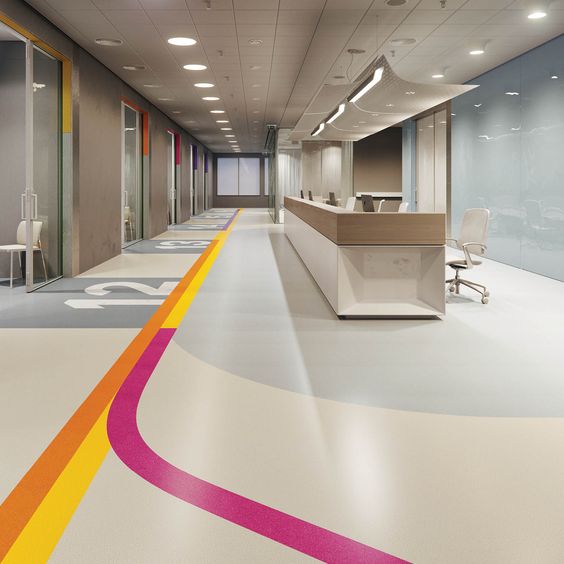
As staff and patients spend the most time in these environments, the flooring type should promote comfort and durability besides the aesthetically pleasing look. Linoleum is one of the best options when it comes to choosing the best flooring material for hospitals.
However, choosing the best hospital flooring type may also depend on the areas to be floored, for instance, the intensive care unit may need a special type of flooring that differs from those in other areas. For instance, linoleum makes a great fit for patient rooms due to its anti-bacterial barrier that keeps away moisture and debris, which makes it very beneficial for people who are suffering from allergies, asthma, or other related issues.
The price of linoleum is relatively cheaper compared to some other natural materials, such as ceramic, wood, or stone. It usually costs about the same as vinyl, which is $2 to $5 per square foot.
Being extremely susceptible to moisture, this material isn’t much recommended for areas that are exposed to wet, such as bathrooms, laundry rooms, or other areas with high humidity levels.